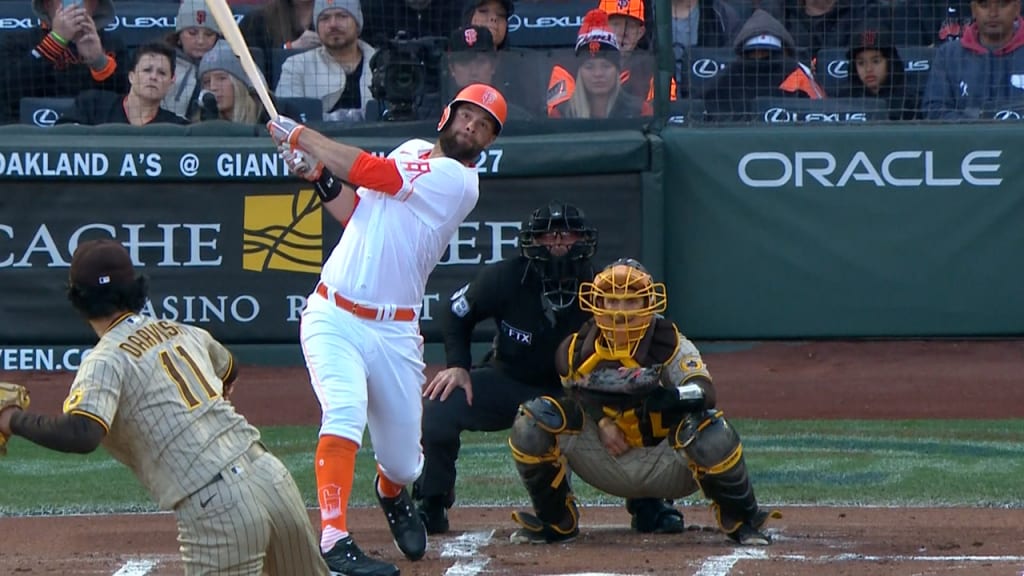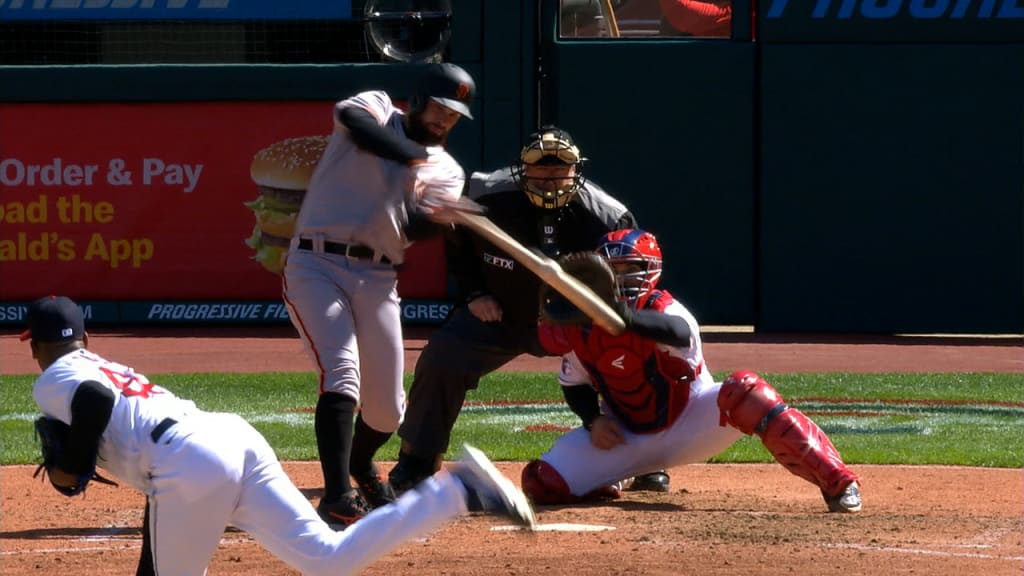The best slugger of the past 3 years is WAY under the radar
This browser does not support the video element.
Of all the incredible things the Giants have done over the past few seasons, all of the pitcher improvements and lottery ticket waiver claims and inventive ways to deploy lineups and overstuffed coaching staffs, all the great things that took them from a .445 winning percentage from 2017-20 to 107 wins last year, there’s one thing that clearly stands out to us as being the most shocking. And it’s this:
Brandon Belt leads the Majors in slugging percentage since the start of 2020.
No, really.
Just look at the list. Entering Monday, there have been 220 batters to take 500 plate appearances since the start of 2020. Sort them by slugging percentage, gawk at the young superstars on their way to Cooperstown, and realize they're behind the now-34-year-old first baseman who’s been more than a little divisive among fans over the last decade.
Highest slugging %, 2020-22
.600 – Belt
.598 – Fernando Tatis Jr.
.591 – Ronald Acuña Jr.
.589 – Bryce Harper
.572 – José Ramírez
.571 – Juan Soto
.570 – Vladimir Guerrero Jr.
Belt, who has three homers in San Francisco’s first seven games, is not going to the Hall of Fame, not without a ticket. He probably won’t have his No. 9 retired alongside Mays, McCovey, and the rest. But after totally bottoming out in 2019, hitting just nine homers for one of the least memorable Giants teams in recent memory, his rise has mirrored that of his club.
This browser does not support the video element.
In fact, if you just put these last three seasons together, you get something that looks like one, full, regular season, and look at these numbers.
Belt, 2020-22
155 games, 594 plate appearances
.288/.396/.600
.996 OPS // 169 OPS+
41 home runs
While it doesn’t exactly work like this, let’s have some fun. Since the team moved to San Francisco in 1958, only 21 qualified Giants seasons have been better than a 169 OPS+, and 11 of those were from Barry Bonds, who is among the best hitters ever. A Giants hitter has hit more than 41 homers in a season just 15 times, and seven of those were Bonds, too. In the "hidden full season" Belt is just about to complete, he’s been one of the elite power hitters in the game.
Which is all the more impressive, because for so many years, he was not.
For the first nine seasons of his career, Belt was a good-not-great first baseman, productive enough to not be replaced, yet rarely elite enough to make you think they could never find anyone better. From 2011-18, he made one All-Star team and won two rings, posting an .811 OPS, but he never once hit more than 18 homers in a season. Sometimes, he was asked to play the outfield. Most years, he was missing time due to injuries, be it thumb, concussion, knee, or other.
Then, in 2019, like the rest of the Giants, he completely bottomed out. Belt slashed a mere .234/.339/.403, spending a chunk of the year hitting leadoff on a 77-win team. At 31, with a pair of seasons left on the six-year contract he’d signed early in 2016, it seemed like the team was counting days until the title-winning core was gone and a real reset could occur.
Of course, then this happened.
Belt slugged .448 through his age-31 season. He's slugged .600 since.
So we wondered how rare that is, for a player with decent power to find outstanding power this late in his career. The answer: extremely rare. There’s only one good comparison. To find out, we looked at a list Belt qualifies for, which is all players who had a slugging percentage of .450 or lower through their age-31 season, dating back to 1920, in at least 4,000 plate appearances. (There are 477 such players.) We're trying to filter out the Bonds, Mays, etc. types who were already great sluggers.
Then, we looked at those 477 players to see how many followed up that performance by posting a slugging percentage of .500 or more, with a minimum of 500 plate appearances, from age 32 through 34, as Belt has done, as he plays his age-34 season. Turns out, only one other player has done the same: Luis Gonzalez, who spent a decade being a good-not-great outfielder for three teams in the 1990s before joining the D-backs and turning himself into one of the best power hitters in the sport.
So: How? Gonzalez’s surge was attributed to fitness and changes in stance, approach, and bat weight, though he was forever dogged by rumors (unfounded, in his opinion) that his gain was aided by the off-field approach popular with many hitters of the time.
What, then, has fueled Belt’s rise? It’s not, so far as we can tell, a sudden ability to stay healthy, because that hasn’t changed; in 2020, it was an Achilles, in 2021 alone, it was issues with his oblique, knee, and thumb – though he did say that the 2018 knee surgery affected him into 2019.
Let’s instead highlight the two reasons that might come to mind.
This browser does not support the video element.
1. It’s not as much about the changes to his home field.
It’s easy to point to what the Giants did to Oracle Park in the 2019-20 offseason, bringing in various fences and lowering some walls. As we showed last year, it made a big difference, perhaps nothing more than the new video board potentially improving the hitter’s eye. Belt, who was long known for losing potential home runs to “Triples Alley” in right center, has benefited.
But maybe this isn’t as big a factor as you’d think. Through 2019, he didn’t have any difference in home slugging (.446) as compared to road (.449). Even in 2021, he slugged better on the road. He's got 21 home runs at home since the start of 2020, and 20 home runs on the road. So maybe it’s less about the park, and ...
2. It’s a lot about the changes to his approach.
... more about the generally incredible changes the Giants have made as a lineup. These were dissected in great detail during last year’s run, from Brandon Crawford’s swing change to Posey’s stance change to Evan Longoria’s mechanical work and bat change. That extends to pitch decisions, because as Mauricio Dubón said last spring: “If I can't hit it out, I'm not swinging.” The Giants were essentially in a three-way tie for lowest chase rate in 2021.
Belt always had a good eye, of course, with regularly high walk rates driving excellent OBP marks, helping to make him valuable even when he wasn’t mashing the ball. But the swing decisions are clearly different here, because just look at this nose-diving chase rate.
2018 – 23%
2019 – 23%
2020 – 19%
2021 – 19%
2022 – 15%
He’s not really striking out less; he’s actually swinging and missing a bit more at strikes. But he’s making better swing decisions, hitting the ball harder, in the air more often, and yes, in a park that’s now a little more rewarding of such an approach. Belt isn’t the only reason the Giants are quickly backing up their big year, because so much credit needs to go to the pitching staff. But he’s become one of the best power hitters that no one seems to notice.

